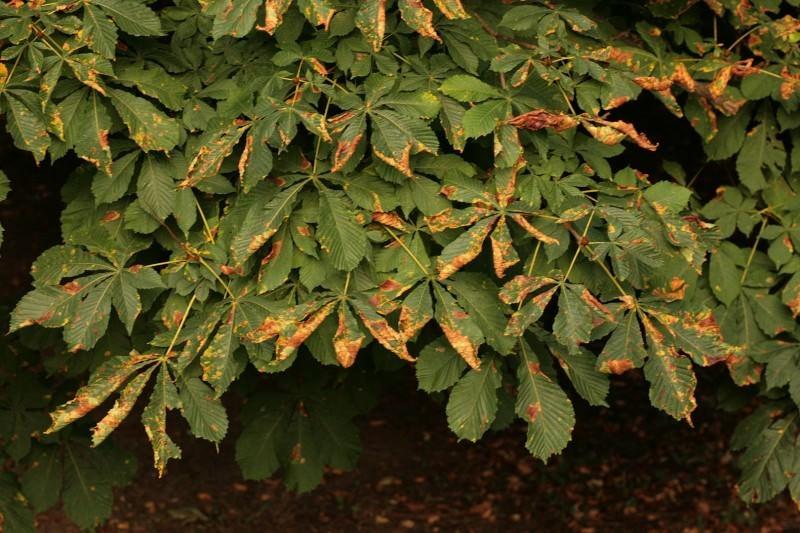Diseases and pests of chestnut - what are there and how to help the tree
 The luxurious dense crown of chestnuts gives a pleasant coolness in summer, but very often even these mighty trees have problems. Diseases and pests of chestnut can pretty much spoil the appearance and even lead to death. What do the trees suffer from, and is there a chance to restore their decorative appearance?
The luxurious dense crown of chestnuts gives a pleasant coolness in summer, but very often even these mighty trees have problems. Diseases and pests of chestnut can pretty much spoil the appearance and even lead to death. What do the trees suffer from, and is there a chance to restore their decorative appearance?
Diseases and pests of chestnut: how they manifest themselves and how to treat
At first glance, chestnuts seem powerful and sturdy. But even they are not immune from infections, fungi and insects. For example, powdery mildew, familiar to all gardeners and gardeners, feels good and multiplies on ornamental crops. Do not disdain large foliage of aphids and other harmful insects. But let's talk about everything in order.
What are chestnuts sick
Most often, chestnuts, regardless of the type, can be affected by:
- Various types of spotting. With perforated spots, small holes appear on the leaves, and dry brown spots grow around them. From black spot, the leaves turn black and fall off. With brown, red-brown spots quickly spread along the leaf and it dries out. Treatment: regular processing of trees with Bordeaux liquid.
- Necrosis. The death of tissues is most often provoked by the resulting burns or mechanical damage. Treatment: such branches should be cut, and trees should be whitened in spring and autumn to prevent necrosis.
- Rot. It can be root or stem. Treatment: does not exist, the trees must be cut down. For prevention, soil treatment with fungicides is needed.
- Powdery mildew. White bloom on the leaves turns into brown spots and leads to their falling off. Treatment: treatment with fungicides.
In case of manifestation of any diseases, it is necessary to carefully remove and burn the fallen leaves. In addition, dig up tree trunks and prune trees in a timely manner.
The main enemy of the horse chestnut is the mining moth and other pests
Small butterflies no more than 4 mm long are capable of completely destroying a common horse chestnut grove. Their larvae live in leaves and feed on them. First, red spots begin to appear on the leaves at the bite sites. Over time, they become larger, and the foliage dries out. As a result, by the end of summer, the chestnut loses its deciduous cap, and only bare trunks remain. The reason for this phenomenon is the mining moth.
Fighting a pest is an ungrateful and impossible task in urban conditions. Specialists in the protection of ornamental trees today suggest treating trees with special hormonal preparations. However, they are very expensive, moreover, they cannot be used in a populated area due to serious side effects. The most reliable way to get rid of moths is to replace the common chestnut with more resistant varieties. These include the meat-red horse chestnut. Its miner moth is not very fond of, and brown spot rarely affects leaves. Outwardly, both species are very similar: they have the same crowns and leaves. The main difference between the meat-red chestnut is the inflorescences - they are pink-red. The common horse chestnut has white flowers with a yellow or pink tint.
In addition to moths, aphids, scale insects, Chafer, leaf beetle and other pests. Insecticides and acaricides are used against them.